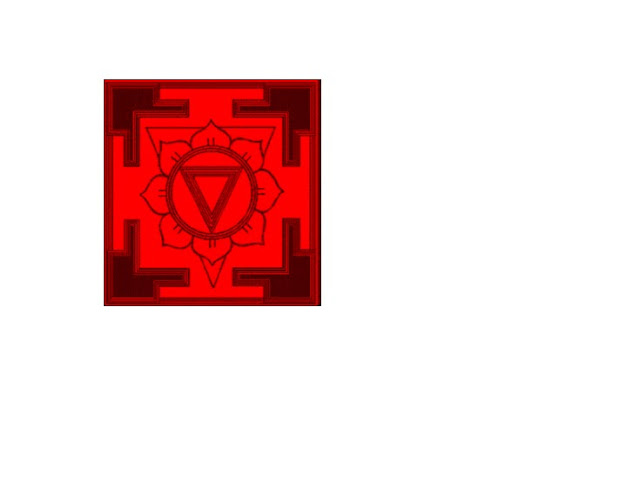The tantrik worship of these most powerful Vidyas must be
practiced only under the guidence of a siddha Guru.
In Tantra, worship of Devi-Shakti is referred to as a Vidya. Of the hundreds of
tantrik practices, the worship of the ten major Devis is called the Dasa
Mahavidya. These major forms of the goddess are described in the Todala
Tantra. They are Kali, Tara, Maha Tripura Sundari (or Shodasi-Sri Vidya),
Bhuvaneshvari, Chinnamasta, Bhairavi, Dhumavati, Bagalamukhi, Matangi,
and Kamala. These ten aspects of Shakti are the epitome of the entire creation.
Chapter 10 also outlines their consorts, although Dhumavati, the widow form, is
not allocated a consort.
There are several "levels" at which these Devis can be worshiped with the
prescribed Mantra and Yantra. Like a simple worship of the yantra with the
mantra recitation, as a remedial astrological measure, elaborate worship with
all tantrak rituals for attaining various siddhis associated with these tantras and
for spiritual salvation.
Successful sadhana of these Vidyas gives several boons to the practitioner.
The Tantrik-Yogi who has control over his senses and positively inclined uses
the boons to guide people and for the benefit of mankind. The ones whose
head starts spinning with success use them for the gratification of the senses,
gather a bunch of disciples around them and become fake gurus.
The last chapter of todala Tantra equates Vishnu's ten incarnations with the ten
Mahavidyas as follows:
"Shri Devi said: Lord of Gods, Guru of the universe, tell me of the ten avatars.
Now I want to hear of this, tell me of their true nature. Paramesvara, reveal to
me which avatar goes with which Devi.
"Shri Shiva said: Tara Devi is the blue form, Bagala is the tortoise incarnation,
Dhumavati is the boar, Chinnamasta is Nrisimha, Bhuvaneshvari is Vamana,
Matangi is the Rama form, Tripura is Jamadagni, Bhairavi is Balabhadra,
Mahalakshmi is Buddha, and Durga is the Kalki form. BhagavatÌ Kali is the
Krishna murti." (Todalatantra, chapter 10)
The worship of these is also prescribed as an astrological remedy - for the 9
planets and the Lagna as follows:
Kali for Saturn, Tara for Jupiter, Maha Tripura Sundari (or Shodasi-Sri Vidya)
for Mercury, Bhuvaneshvari for Moon, Chinnamasta for Rahu, Bhairavi for
Lagna, Dhumavati for Ketu, Bagalamukhi for Mars, Matangi for Sun, and
Kamala for Venus.
1. KALI
Kali. Seated on a corpse, greatly terrifying, laughing loudly, with fearful fangs, four
arms holding a cleaver, a skull, and giving the mudras bestowing boons and
dispelling fear, wearing a garland of skulls, her tongue rolling wildly, completely
naked (digambara - clad in the directions), thus one should meditate on Kali,
dwelling in the centre of the cremation ground.
The Kali Mantra as given in the Mantra Mahodadhi is:
"Kreem Kreem Kreem Hum Hum Hreem Hreem Dakshine Kaalika
Kreem Kreem Kreem Hum Hum Hreem Hreem Swaha"
It bestows the eight supernatural powers.
The Kali Tantra gives details of the puja of Kalika:-
"Now I speak of the ritual injunction which is the all-nectar-giver of the Devi.
Doing this, a person becomes like Bhairava.
"Firstly, I speak of yantra, the knowing of which conquers death. At first draw a
triangle. Outside, draw another. Then draw three more triangles. "Draw a circle
and then a beautiful lotus. Then draw another circle and then a bhupura with
four lines and four doors. This is how the cakra should be drawn.
"Worship the guru line, the six limbs, and the dikpalas (The eight, or according
to some, ten guardians of the directions, ed.). Then the mantrin should place
his head at the feet of the guru.
"O dearest one, after worshipping the pedestal, set down the offering. Place the
mantra in the six limbs. Then, within the heart lotus, the ultimate Kala
blossoms.
"Place her in the centre of the yantra by invoking her (via the breath). After
meditating on the great goddess, dedicate the ritual offerings. Bow to Mahadevi
and then worship the surrounding deities.
"Worship Kali, Kapalini, Kulla, Kurukulla, Virodhini, Vipracitta in the six angles.
Then Ugra, Ugraprabha, Dipta in the middle. Then Nila, Ghana and Balaka in
the inner angle. Then Matra, Mudra and Mita within this triangle, and then the
very dusky one holding the sword, adorned with human skulls, with her left
hand showing the threatening mudra and having a pure smile.
"Worship the eight mothers Brahmi, Narayani, Maheshvari, Chamunda,
Kaumari, Aparajita, Varahi and Narasimhi.
"In equal shares, give these devis animal sacrifice and worship them, smearing
them with scent and offering incense and flame. After doing the puja, worship
using the root mantra.
"Give food and so forth to the Devi again and again. The sadhaka should offer
flame ten times. So also he should offer flower with mantra according to the
rules of ritual.
"After meditating on Devi, recite the mantra 1,008 times. The fruit of reciting,
which is light, place in the hands of the Devi.
"Then, placing the flower on the head, do prostration. With supreme devotion,
then rub out (the yantra)."



